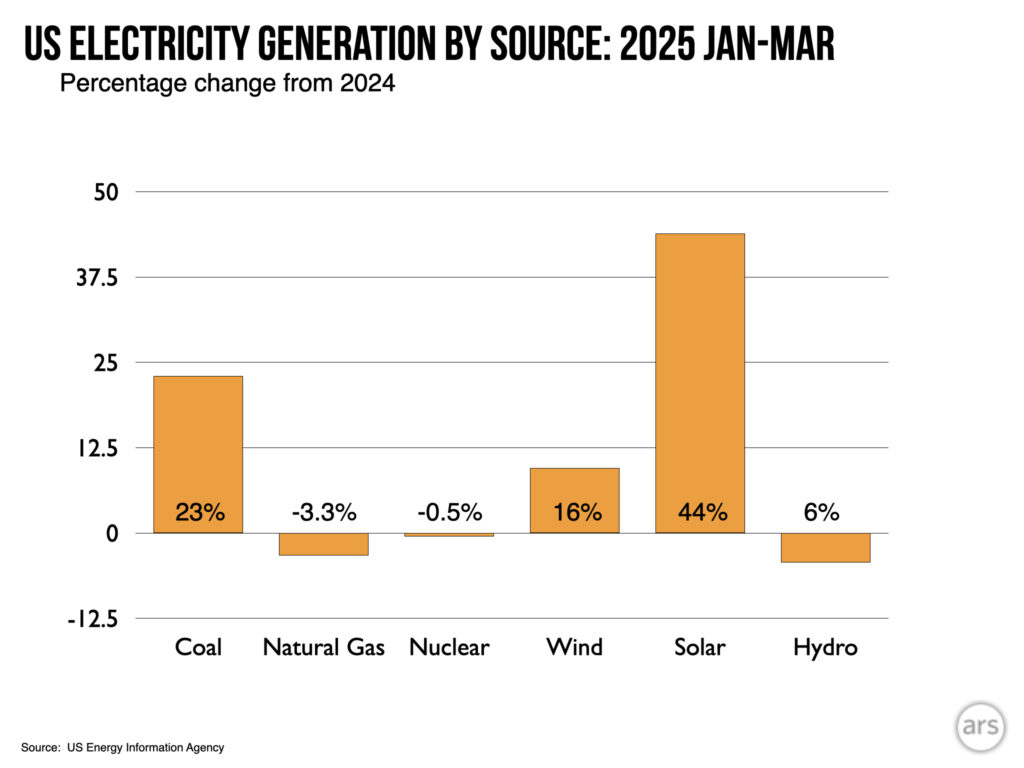With current energy demands, fossil fuels are filling the energy gap. In an unexpected turn, usage of natural gas saw a decline during the first quarter of 2025. Consequently, coal consumption surged, climbing by 23 percent compared to the same period in 2024, closely tracking overall energy demand.
Despite this uptick in coal use, the share of carbon-free electricity remained stable from year to year, with renewable sources like wind, solar, hydro, and nuclear together contributing 43 percent of total power to the U.S. grid. This stability occurred even amid slight decreases in nuclear and hydroelectric generation.
In 2025, solar energy achieved a significant milestone, though its impact may not be immediately apparent in the statistics. Current grid power shows a lower output from solar compared to hydro. However, the Energy Information Agency recognizes contributions from small-scale solar installations, such as residential rooftop panels, which often supply energy directly to homes rather than the grid. When combining the outputs from both small- and grid-scale solar, the total significantly exceeds that of hydropower.
This increase in solar generation follows a remarkable 30 percent production rise the previous year, indicating a strong growth trajectory.
The momentum for solar is unlikely to wane soon, even amid recent cuts to tax incentives for renewable energy included in a budget package recently passed by the House of Representatives. Potential opposition from some Republican Senators may alter these changes, particularly if they impact their state interests. Solar power remains more cost-effective than several alternatives, even without tax breaks, and the costs for all power plants are expected to increase due to a challenging tariff environment. Moreover, many renewable energy projects require extensive planning well in advance of projected tax changes.
Given these variables, the solar expansion is expected to continue for at least the next few years until any new financial constraints take effect.







